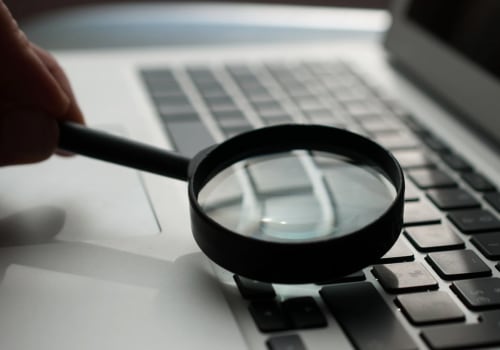Process auditing is an essential part of any organization's operational strategy. It helps ensure that processes are running smoothly, efficiently, and safely, and that all necessary standards are being met. It's also a critical tool for measuring performance, assessing risk, and identifying areas for improvement. In this article, we'll explore the standards for process auditing, as well as the importance of following them in order to maintain a successful organizational structure.
We'll also look at the key elements of an effective process audit and how to create an effective audit plan. By the end of this article, you'll have a better understanding of the standards for process auditing and how they can help your organization succeed.
Monitoring Performance After an Audit
Auditing process performance is an important step in ensuring that operations are running efficiently and in line with industry standards. After completing an audit, it is important to establish a plan for monitoring the performance of the processes that were audited. The first step to monitoring performance after an audit is to establish measurable objectives.These objectives should be specific and measurable so that progress can be tracked over time. The objectives should also be realistic and achievable within the desired timeframe. Once the measurable objectives have been established, the next step is to set up a system for monitoring the performance of the processes. This system should include regular check-ins with key personnel, as well as periodic reviews of the process performance.
It is also important to establish a timeline for when the review process will take place, and ensure that all members of the team are aware of the review schedule. It is also important to ensure that any changes made to the process as a result of the audit are monitored. This can be done by setting up a system to track changes and monitor their effectiveness over time. This will help to ensure that any new processes or procedures are being implemented correctly and are having a positive impact on performance.
Finally, it is important to establish a plan for addressing any issues that arise during the monitoring process. This should include a system for identifying potential areas for improvement, as well as plans for implementing those improvements. By having a well-defined plan for addressing any issues that arise, it will help to ensure that operations are running smoothly and in line with industry standards.
Understanding Standards for Process Auditing
Process auditing is an important component of operational auditing, as it allows companies to ensure that their operations are aligned with industry standards. Process auditing involves evaluating the effectiveness of the processes and procedures used by a company to achieve their desired business objectives.It also involves assessing the risks associated with these processes and making sure that proper controls are in place to mitigate them. When it comes to process auditing, there are several different types that can be used. These include internal process auditing, external process auditing, and compliance process auditing. Internal process auditing involves examining the internal processes and procedures used by a company to ensure that they are effective and efficient. External process auditing involves assessing the processes and procedures used by a third-party organization, such as a vendor or supplier, to ensure that they meet the standards of the company.
Compliance process auditing is a more specialized type of process audit, which involves assessing whether a company is adhering to specific laws, regulations, and industry standards. These different types of process audits are all connected to operational auditing in some way. Internal process audits can help identify areas of risk or inefficiency within an organization's operations, while external process audits can help ensure that vendors and suppliers are meeting the standards set by the company. Compliance process audits can help confirm that a company is adhering to regulations or industry standards. It is important for organizations to understand how each type of process audit works and how it relates to operational auditing. This can help them ensure that their operations are running smoothly and in line with industry standards.
Additionally, understanding these standards can help organizations identify potential areas of risk and inefficiency and make necessary changes to mitigate any potential issues.
Implementing Process Auditing Standards
Implementing process auditing standards is essential for successful operations. Process auditing is the process of evaluating an organization's processes and procedures to ensure they meet certain standards. In order to conduct a successful audit, organizations must have a clear understanding of the standards they are required to meet. This article will explore the guidelines and best practices for conducting an effective audit.Establishing Standards:
The first step in conducting an effective process audit is to establish the standards that will be used for the audit.The standards should be based on industry best practices, regulatory requirements, and organizational policies and procedures. Organizations should also consider the goals and objectives of the audit when establishing their standards.
Audit Planning:
Once the standards have been established, the next step is to plan the audit. This includes creating an audit plan which outlines the scope, objectives, timeline, and resources needed for the audit. It is important to ensure that the audit plan is well documented and communicated to all stakeholders.Data Collection:
Data collection is an important part of any process audit.It is important to collect data from both internal and external sources in order to ensure accuracy and completeness of the audit results. The data collected should be relevant to the standards being evaluated.
Analysis:
Once the data has been collected, it needs to be analyzed in order to determine whether or not the standards are being met. The analysis should include a comparison of actual performance against expected performance, as well as a review of any issues or areas of improvement that were identified during the data collection process.Reporting:
After the analysis has been completed, a report should be generated that outlines the findings of the audit. The report should include an overview of the audit process, detailed results, and any recommendations for improvement.The report should also provide a summary of any changes that need to be made in order to meet the standards.
Follow-up:
Once the audit is complete, it is important to follow up on any issues or areas of improvement that were identified during the audit. This should include implementing corrective action plans as well as monitoring progress towards meeting the standards. Process auditing is an essential part of ensuring that operations run efficiently and in line with industry standards. To ensure compliance with regulations and customer needs, it is important to understand the standards for process auditing and implement them properly. Having a plan in place for monitoring performance after an audit has been conducted can also help to identify any potential issues that may arise in the future.Standards for Process Auditing, Implementing Process Auditing Standards, and Monitoring Performance After an Audit are all key elements of operational auditing that can help to ensure the success of a business.







